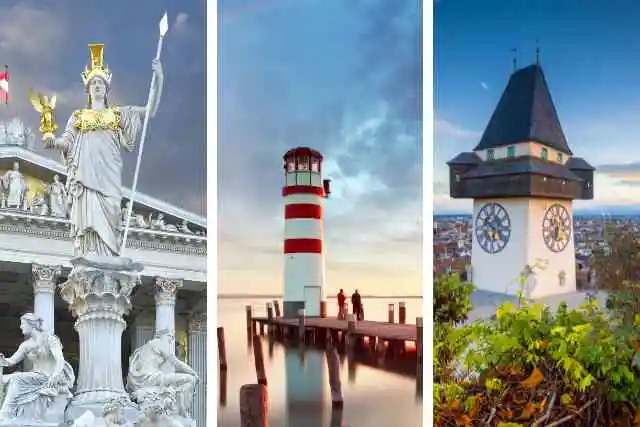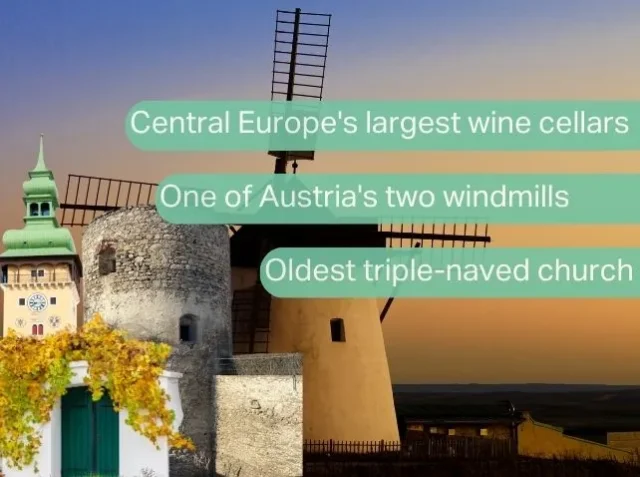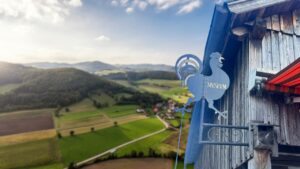Baden is unique for its beautiful vineyards, rich history, scenic walks, relaxing spas, impressive monuments, and cultural events.
Discover Baden bei Wien

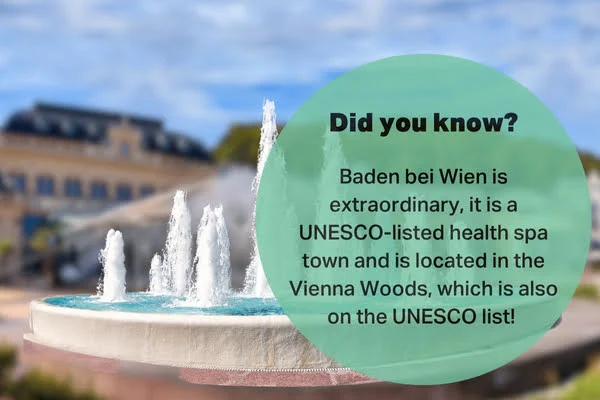
Baden is a UNESCO World Heritage City since 2021 and is part of Europe’s spa towns. About 26,000 residents live in this town, located approximately 25 km from Vienna along the Thermenline. Known for its spas and rich history, Baden served as a Roman settlement, a spa destination, and an imperial residence.
Thermenline and Thermenregion
The Thermenline, running through the Vienna Basin, boasts many thermal springs, including those in Baden, Bad Vöslau, Bad Fischau, and the Vienna spring in Oberlaa. Additionally, the Thermenline is known for its mild climate, which supports ideal grape growing conditions. Consequently, the vineyards in this region form the area known as the Thermenregion. Moreover, this region’s unique combination of thermal springs and vineyards attracts numerous visitors, making it a highly desirable destination.

Photo by Uoaei1 – Own work, CC BY-SA 4.0, via Wikimedia Commons
The Thermenregion, a wine region in Austria near Vienna, includes Gumpoldskirchen, Bad Vöslau, Perchtoldsdorf, Mödling, Baden, and Wiener Neustadt. This region specializes in unique grape varieties such as Zierfandler (also known as Spätrot) and Rotgipfler. Additionally, the Thermenregion boasts a rich history of viticulture and wine production. Furthermore, its mild climate provides ideal conditions for growing these special varieties. Consequently, wine enthusiasts frequently visit this area to sample its distinct wines. Therefore, the Thermenregion stands out as a significant wine-producing region in Austria.

Did you know?
The Vienna Basin and Thermenline are seismically active, experiencing several noticeable earthquakes each year, with destructive quakes occurring approximately once every few decades.
If you get hungry, we recommend the Badener Eck Restaurant, serving Austrian cuisine and boasting a 4.5-star rating on Google Maps, located near the Beethovenhaus. Another great option is Zum Reichsapfel, with a 4.6-star rating on Google Maps, situated near the parish church and offering a variety of local specialties.
Among the cafés, we recommend Das Friedrich, located next to Beethoven’s house and rated 4.7 on Google Maps, and Cafe Sild, a charming local café near the parish church and Kurpark, they have 4.8 on Google Maps.
A visit to the Frauenbad is highly recommended. Today, it functions as an art gallery housed in an old bathing place, where you can still see its historic interiors.
An interesting experience awaits at the Toys or Puppet museum. While it may sound inconspicuous, you’ll often find more visitors here compared to other museums in Baden. The museum isn’t just for children; the detailed clothes and furnishings of the dolls’ houses transport you back in time. The museum staff, who are exceptionally pleasant, deserve praise as some of the nicest we’ve encountered.
When your tour is over, there’s no need to rush back to Vienna. Instead, enjoy a walk through the vineyards to the next station. This scenic walk takes about 1-2 hours and leads you through beautiful vineyards and along the Viennese waterway! From there you can take a train to Vienna. Tip: You may find a vending machine with wine during your walk!
Before visiting Baden, be sure to purchase the Niederösterreich Card. This card grants you access to top attractions such as the Toys Museum, Beethovenhaus, Frauenbad, and Kaiserhaus, all for a single admission fee, allowing you to save money and enjoy more during your trip!
The Coat of Arms
of Baden bei Wien
Officially granted in 1480, features the colors of Austria and includes two figures in a bathtub. These figures highlight the mineral springs and baths in Baden, renowned since Roman times. The term “Baden” itself means “baths,” reflecting the city’s long-standing association with its famous therapeutic waters.

This image is taken from www.ngw.nl – Heraldry of the World – an international civic heraldry site by Ralf Hartemink. ngw.nl/heraldrywiki/index.php?title=Baden_(Niederösterreich), Public Domain, Link

The Rich History of Baden
Prehistory of Baden
The name “Baden culture” originates from Baden. Located about 2.5 km from the center of Baden, the Königshöhle (Cave) reveals signs of human activity from 7,000 to 3,500 years ago. In the 20th century, archaeologists discovered pottery elements here. Consequently, they identified these artifacts as a new style, which they named the Baden culture.
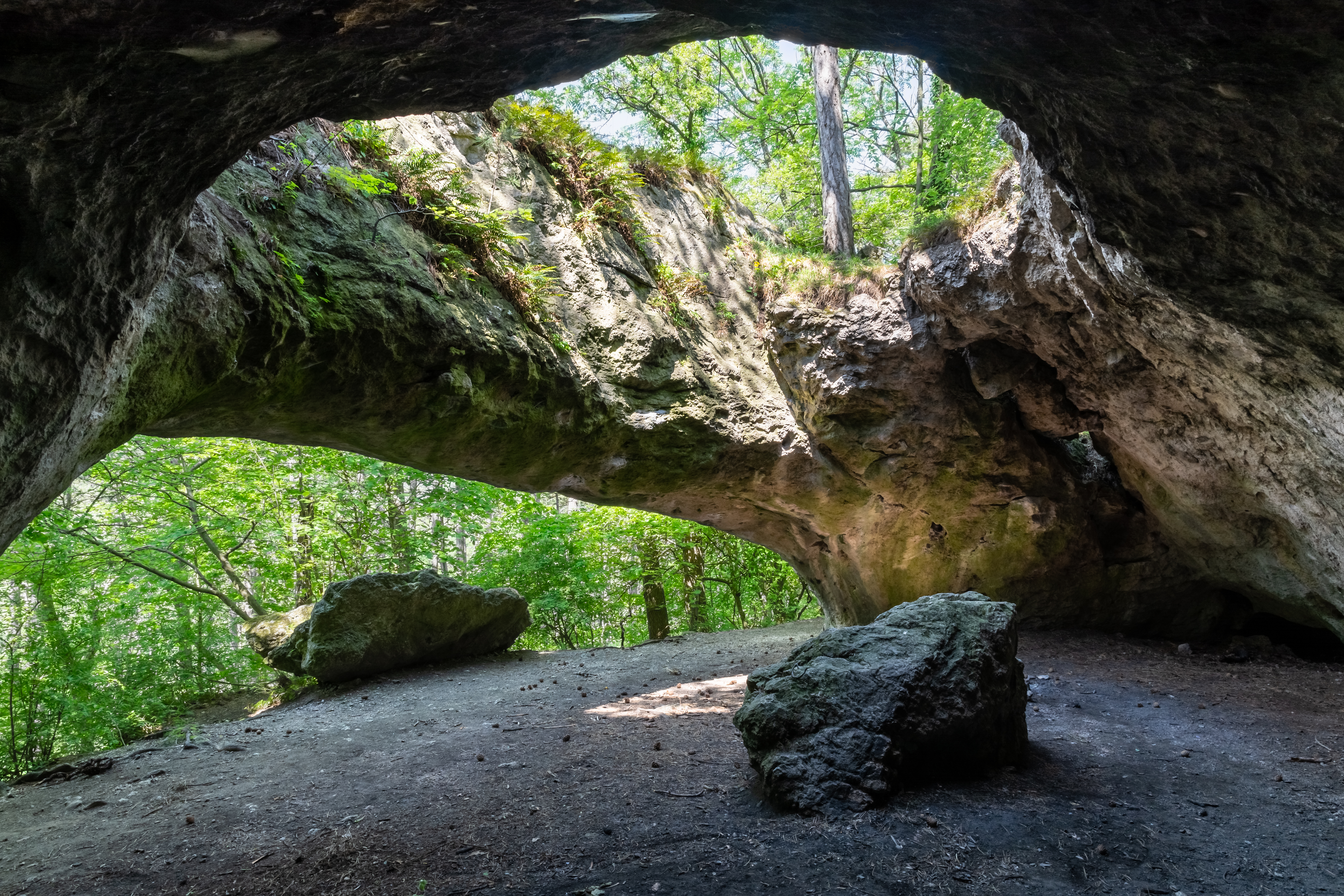
Von Uoaei1 – Eigenes Werk, CC BY-SA 4.0, via Wikimedia Commons, Link
Ancient Inhabitants
The Celts and Romans also inhabited the area of today’s Baden. The Romans, in particular, utilized the sulphur springs and cultivated grapes. During Emperor Claudius’s reign (41-54 CE), the place was called Aquae. They built temples, barracks, and residential houses here. Roman soldiers from Vindobona and Carnuntum frequently visited Baden’s springs.
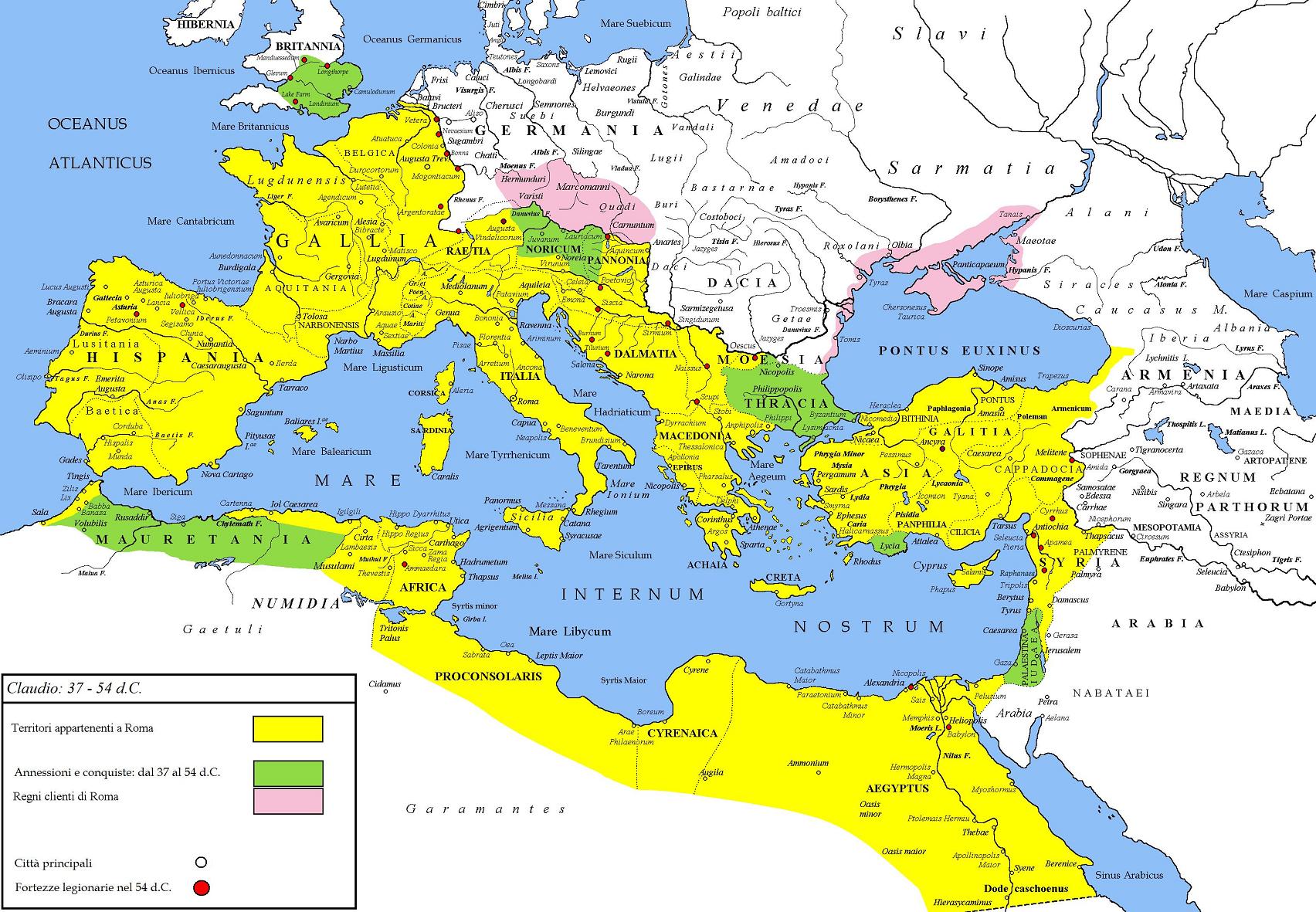
Photo by Cristiano64 – Own work, CC BY-SA 3.0, Link
Did you know?
Emperor Claudius is the same emperor who conquered Great Britain.
The Middle Ages and Beyond
in Baden
During the Middle Ages, Baden thrived and became renowned for its spa properties. In 1480, Emperor Frederick III granted the town local rights, highlighting its significance. Moreover, the medieval coat of arms already depicted people using Baden’s springs.
Did you know?
Baden is home to the castle Rauhenstein, ruled by one of the most dangerous lords of the 15th century. In 1466, he even attacked the entourage of Empress Eleonora’s wife, who was in Baden for treatment.

Photo by Sae1962 – Own work, CC BY-SA 4.0
In the centuries that followed, Turkish invasions in 1529 and 1683, the Thirty Years’ War, the plague of 1713, and the Great Fire of 1714 devastated Baden. Despite these setbacks, the city recovered and flourished. Emperor Francis II established his summer residence in Baden and spent many years here. This boosted tourism and earned the city the nickname “Imperial City,” making its springs even more famous. Another fire in 1812 led to a rebuilding effort in the Biedermeier style.
One of the few elements to survive the fire was the Plague Column. The medieval city walls, which stood until 1813, were also demolished.
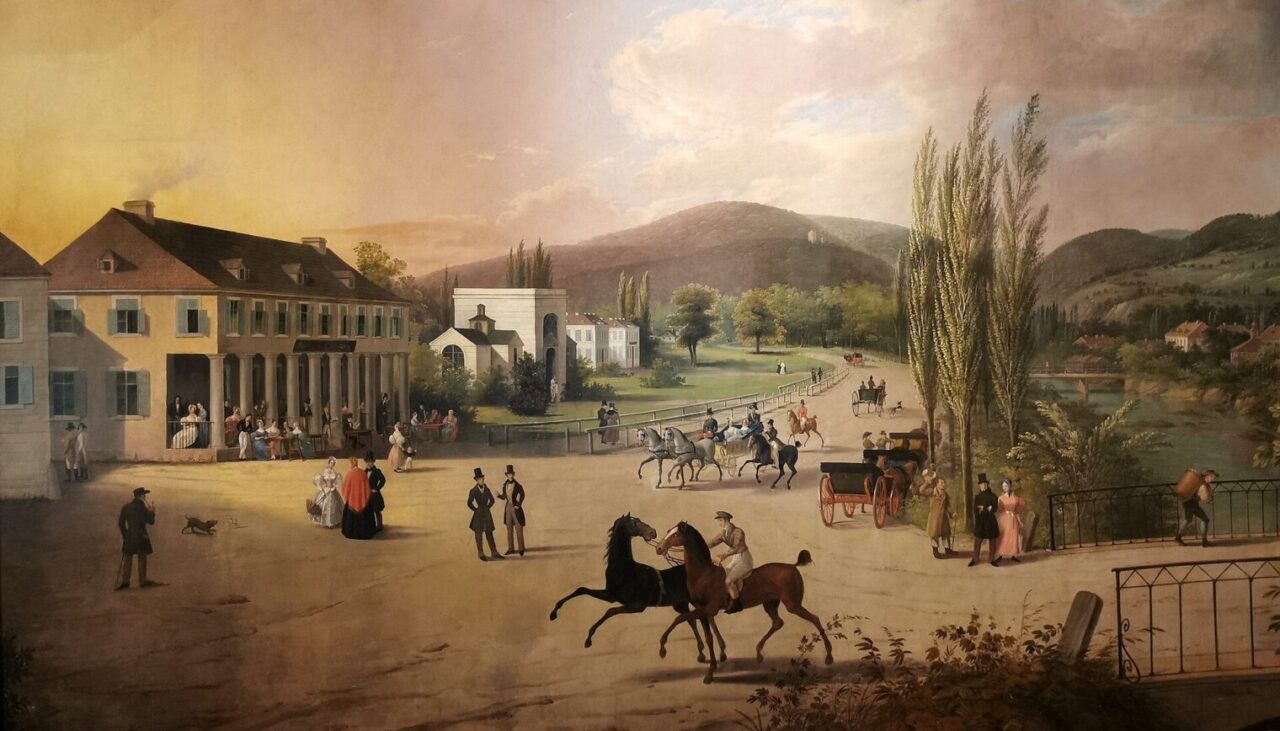
Did you know?
In 1488, Beatrice of Naples came to Baden for infertility treatment. Beatrice was the wife of Matthias Corvinus, known as the second Attila, who conquered parts of what is now Austria, including Vienna, and created a vast empire.
Baden During the World Wars
During the First World War, the army command was based in Baden and Emperor Charles I often stayed there as commander-in-chief.

The synagogue in Baden was burnt down in 1938. The general financial situation of Baden before the Second World War was poor, with high inflation, unemployment and municipal debt. The Austrians, wishing to distance themselves from the Habsburg Empire that had collapsed in 1918, aspired to join Germany. From 1938, persecution of the Jewish community intensified, with confiscation of property and physical and mental harassment. Hitler’s plan for Baden was to make it the largest spa town in Nazi Germany, which involved demolishing some buildings and incorporating Nazi architecture. However, these plans were never realised. Following the trend of the time, the main square with the Plague Column was renamed Adolf Hitler Square. In 1938, the Jewish population of Baden numbered 2,800, making it the third largest Jewish community in Austria. Their property was confiscated by the people of Baden and the Jews were deported.
In 1945, several buildings in Baden were destroyed due to air raids.

The Post-War Period in Baden
Between 1945 and 1955, Baden was the capital of the Soviet occupation forces. These forces became notorious for their looting and violence, including rape. Consequently, the people of Baden faced severe hunger and frequent attacks on their neighbors. During this time, the city experienced great hardship and unrest. Moreover, the oppressive environment further exacerbated the challenges faced by the residents, leading to a prolonged period of suffering.
Austria Occupation Zones 1945-55.svg. By derivative work: Master Uegly, Austria adm location map.svg by NordNordWest, Flag of the Soviet Union (1923-1955).svg by rotemliss, Austria Vienna location map.svg by Rosso Robot – recreation of Austria 1945-55.png using original source file from AEIOU.at, CC BY-SA 3.0
Must See in Baden
The Frauenbad in Baden
The history of the Frauenbad in Baden dates back to 1297, when the Frauenkirche chapel stood over the spring. The spring, probably used by the Romans, filled the bath’s tank, which was first mentioned in 1357. In 1531, Emperor Ferdinand I donated it to the city. After a fire in 1812, the bathhouse was rebuilt in 1821 to the design of Karl Ritter von Moreau. Famous personalities such as Emperor Francis I and Elector Frederick Augustus of Saxony enjoyed the luxurious conditions of the Frauenbad. Between 1877 and 1878 the building was thoroughly reconstructed according to the plans of Julius Heene. After the end of its spa activities in 1973, Frauenbad became an exhibition centre and has housed the Arnulf Rainer Museum since 2009.

Photo by Tokfo – Own work, CC BY-SA 3.0 at
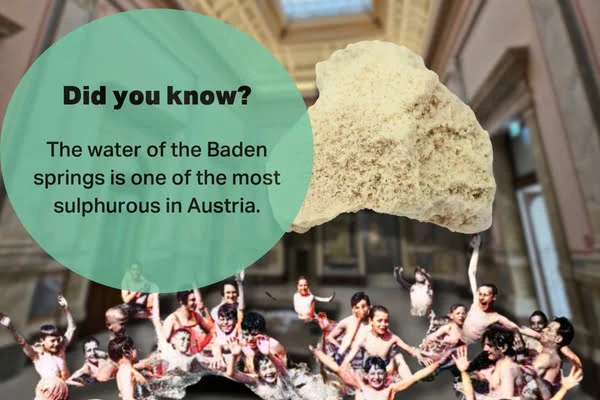
Frauenkirche in Baden
The Frauenkirche in Baden has been important for religion and culture in the region for centuries. In 1285, knight Leutold von Chrevsbach gave it to the Augustinian hermits, leading to the monastery’s growth in the 14th century. Despite destruction by Turkish invasions and a fire in 1714, the church was renovated in the Baroque style.
Did you know?
In 1828, Napoleon’s son, the Duke of Reichstadt, was confirmed in the Frauenkirche. He was Napoleon Bonaparte and Maria Luisa of Austria’s son and spent part of his childhood in Baden.
In 1812, another fire in Baden destroyed the building. Later, Emperor Francis I renovated and bought it. In 1827, the church gained the status of an imperial court church, and in 1828, Napoleon’s son received his confirmation there. After the monarchy fell, the church transitioned to an independent legal entity.
Between 1825 and 1826, builders reconstructed the church in the Classicist style, keeping many Baroque elements. Moreover, the Frauenkirche has held significant importance throughout its history.
Did you know?
The church played a key role in the secret conversion of Frederick Augustus the Strong, Elector of Saxony, to Catholicism. This significant event took place on June 1, 1697, and was necessary for Frederick to become the king of Poland. Moreover, this conversion highlighted the church’s influential position in regional religious and political affairs. Additionally, it underscored the intricate relationship between religion and monarchy during that period.
Photo by User:Karl Gruber – Own work, CC BY-SA 4.0
Holy Trinity Column
The Holy Trinity Column in Baden near Vienna is a historical monument, constructed between 1714 and 1718 by Giovanni Stanetti on the order of the city. Martino Altomonte designed the column, which depicts Saints Rosalia, Mary Magdalene, and Peter in deep niches placed on a three-sided base in the shape of a basket arch. The sides of the column feature gilded reliefs depicting biblical scenes, such as Moses with the bronze serpent and the Annunciation. At the top, a statue of Mary Immaculate stands on a gilded globe, surrounded by clouds and figures of cherubs and putti. The Holy Trinity Column is an important architectural and artistic element of Baden, forming an integral part of its history and culture.

The Imperial House in Baden
The Imperial or Keiser House in Baden likely emerged between 1807 and 1812 at the request of Prince Nicholas II Esterházy de Galantha. This three-story building features an early Classicist façade. In 1813, Emperor Francis I bought the house and used it as his summer residence until 1834. During World War I, Emperor Charles I transferred the High Command of the Army to this building in 1917.
Moreover, the Imperial House showcases a façade in the style of late Josephine and early Biedermeier, with a central portal adorned with columns and a simple balcony. Inside, the house preserves painted mock-ups of architecture and cornices. Additionally, in the northeast corner of the garden, an oriental pavilion with a curved roof and crescent moon displays paintings reminiscent of a Turkish tent.
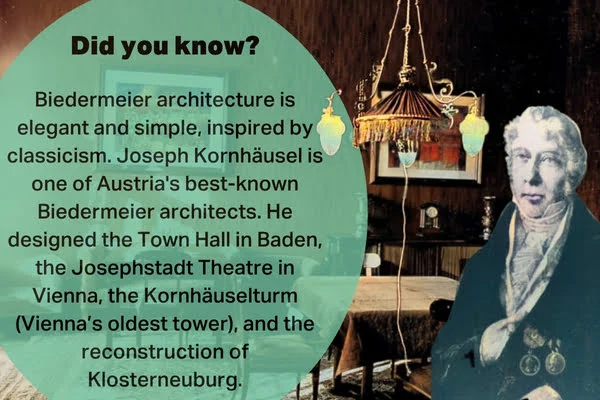
Renovations transformed the house into a museum, which opened in 2013. The museum presents exhibitions related to the history of the Habsburgs, including the notable exhibition “Baden Power Center 1917–1918,” dedicated to the last years of World War I when Emperor Charles I resided in Baden. Furthermore, the Imperial House played a crucial role in transforming Baden into a popular summer resort and spa town. This transformation attracted aristocrats and notable personalities, significantly boosting tourism in the region.

Photo by Verlag Meixner – Own work, CC BY-SA 4.0
The Synagogue in Baden
The synagogue in Baden has undergone several reconstructions. Before Joseph II issued the tolerance patents, Jews could not settle in Baden or use its baths. The 19th-century patents allowed for the establishment of a small Jewish cultural center. In 1870, the Israelite Association for the Aid of the Sick purchased land in the center of Baden. Between 1872 and 1873, they built a large synagogue designed by Franz Breyer. The synagogue features steel beams and cast iron columns, which remain intact today.
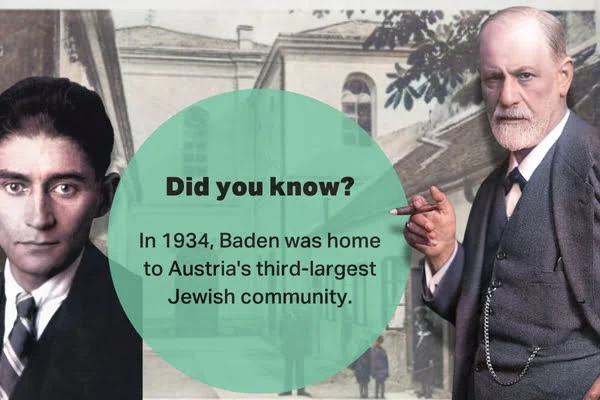
In August 1913, reports indicated a swift reconstruction of the new synagogue, with its inauguration set for the autumn of 1914. By the time of Austria’s annexation, the Jewish community in Baden had become the country’s third largest. In 1938, the Nazis destroyed the synagogue’s interior. However, the Nazis took over the building, preventing further damage during the November pogrom.
After the war, the Soviets used the building, which later returned to the Jewish community. The community didn’t have money to repair it. In 1988, Elie Rosen and Georg Chaimowicz saved the building from demolition. The city of Baden, the state of Lower Austria, and the federal government paid for the renovation, which was finished in 2005.
Today, the synagogue has 115 places for men and 60 for women, along with a meeting centre that can hold 170 people. It hosts concerts and lectures.
Did you know?
The synagogue survived the November Pogrom in 1938 because the National Socialist Union of People’s Welfare took over the building, and it was located near the fire brigade. This prevented it from being further damaged during the attacks.
Beethoven House in Baden
Beethovenhaus Baden, also known as the “House of the Ninth,” is a museum located in the former residence of Ludwig van Beethoven in Baden near Vienna. This historic building dates back to the 16th century and has been rebuilt numerous times. Throughout its history, the house had various owners, including an imperial chapel singer, a furrier, a master mason, and a doctor of medicine. A key moment came in 1808 when Johann Bayer purchased the house and adapted it to accommodate tourists. Ludwig van Beethoven lived here in 1821, 1822, and 1823, writing significant parts of the Ninth Symphony during his stays
Did you know?
While in Baden, Beethoven wrote parts of his famous Ninth Symphony, which later became the European Union anthem.

Photo by Georges Jansoone – Own work, CC BY 2.5
The Bürgerspital in Baden
The Bürgerspital in Baden, also known as St. Anne’s Chapel, served as a residential and nursing home from the 16th century until the mid-19th century. Listed in the register of monuments, the first record of the building dates back to 1312 and 1317, though construction likely occurred in the 13th century.
In 1529, the Turkish invasion destroyed the citizens’ hospital in Baden. However, in 1542, the knight Gerwig Auer von Herrenkirchen funded its reconstruction. During the 18th century, the hospital chapel dedicated to St. Anne received a bell and new altars as part of its restoration.
In the 19th century, the hospital ceased operations, and the building adapted for residential use. Today, the chapel of St. Anne serves as a place of worship for the Old Catholic Church of Austria. The chapel features a single-nave interior with a barrel vault and a richly decorated altar from the 18th century.
Did you know?
Bürgerspital, Spitals, or Hospitals, in the middel-ages were homes for the elderly and disabled.

Photo by © 1971markus@wikipedia.de / CC BY-SA 4.0
The Museum of Toys in Baden
The Museum of Dolls and Toys in Baden, which opened in 1990, is a fascinating destination for both history buffs and toy enthusiasts. Among the oldest exhibits are a peep-box from 1760 and a paper doll from 1820, complete with eight different “dresses”.
Did you know?
Of particular interest is the smallest world wide movable doll, measuring only 12 mm.

Baden Casino
Built between 1884 and 1886 as a new spa building, the Casino Baden was designed by architects Eugen Fassbender and Maximilian Katscher. Built in the Neo-Renaissance style on the site of the former Theresienbad in the spa gardens, the casino reopened in 1995 after several modernisations and is now the second largest casino in Europe. In addition to its gaming facilities, it also includes a convention and event centre. The casino regularly hosts a variety of cultural events, including readings, concerts and the Ave Verum International Choir Competition.

Photo by Anna Saini – Own work, CC BY-SA 4.0, via Wikimedia Commons
Kurpark Baden bei Wien
The Spa Park Badenor Kurpark bei Wien, situated on the southwestern slope of the Badener Berg, boasts renowned historic buildings and garden monuments. The main facility, the Kurhaus, has operated as a treatment and recreation center since 1792. Additionally, the park features the Summer Arena, initially constructed in 1841 and replaced by a new building in 1906. The Temple of Mozart, formerly the Temple of Asclepius, moved and renamed in 1962, adds to the park’s charm.
The park also highlights the historic Theresienbad and the spa house from 1885/1886, both of which have significantly contributed to the city’s cultural and spa life. The combined appeal of these historic structures and the serene garden environment makes Spa Park Baden bei Wien a key attraction in the area.

Von Anna Saini – Eigenes Werk, CC BY-SA 4.0
Theatre in Baden
The Stadttheater in Baden, part of the Baden Theatre in Lower Austria, has a long history dating back to the 18th century. Founded in 1775 as the Comoedien Hauß, it was replaced in 1812 by a new building designed by Joseph Kornhäusel. The current building, designed by Fellner & Helmer, opened in 1909. During the twentieth century it became an important cultural centre in the region. Although it operated as the Niederdonau Gaubühne during the Second World War, it quickly resumed its activities after the war. The theatre has undergone numerous modernisations, including major renovations to mark the 500th anniversary of the city of Baden in 1977, and further renovations in 2009 and 2017. Its stage hosts operas, operettas, musicals, plays and spoken theatre.

House of Art Baden
Haus der Kunst, formerly known as Heim der Kunst, is an exhibition hall in Baden. Built between 1818 and 1819 by Pietro Nobile for Josef von Hudelist, the villa has a rich history and has changed hands several times. One notable owner was Moritz Löwenstein, whose grandson Gustav became famous for his innovative winemaking methods.
In 1913, efforts to establish a casino in the villa failed, leading to its closure in 1914. During the First World War, Emperor Charles I used the villa. In 1925, the town of Baden acquired the building, transforming it into the seat of the spa authorities. After the Second World War, the villa underwent renovations in 1956 and reopened as a cultural center in 1957.
It is interesting to note that for several years the villa housed the Koryphaeum, a unique cabinet of figures by Gerlinde Bartelt-Stelzer, depicting historical figures in three dimensions. Today, the House of Art hosts a variety of artistic and cultural events and plays an important role on the cultural map of Baden.

Photo by Unbekannt – Die Baudenkmale des Kurortes Baden, Baden 1911, PD-alt-100
The Parish Church of
St. Stephen in Baden
The parish church of St. Stephen in Baden stands out with its characteristic Baroque onion helmet, dominating the cityscape. Built on the eastern edge of the old town, it ranks as one of Baden’s most important sights. Initially, the church served as a filial church of the parish in Traiskirchen and, for centuries, belonged to the diocese of Passau. The church’s patron saint is St. Stephen.
Did you know?
There are different ideas about how onion-shaped domes started. Some think the model might have been the Ottoman turban, which Europeans saw after the Turkish invasion in 1529.
The first mention of a clergyman in Baden dates back to 1220, suggesting that the church existed earlier, probably as a castle chapel. During the fourteenth century, the Abbey of Melk took care of the church before it became an independent parish. Due to disputes between the bishops of Passau and the Abbey of Melk, the Diocese of Vienna finally took over the church’s patronage in 1729.
Originally constructed in the Romanesque style, the church underwent a Gothic-style reconstruction in the fifteenth century. The tower, with its Baroque helmet added in 1697 after the Turkish wars, stands 67 meters high and houses five bells. Moreover, the church’s interior features elements from various periods, ranging from Romanesque to Baroque, including numerous side altars and polychrome furniture.

In 1880, a regothisation process began, restoring many Gothic elements to the church. Additionally, the organ installed in 1987 includes the original keys played by Mozart and Beethoven. This church has strong musical connections, as Mozart dedicated his famous composition “Ave verum” to the choir director Anton Stoll, with the first performance of the work taking place here in 1791.
Photo by C.Stadler/Bwag – Own work, CC BY-SA 4.0
Weikersdorf Castle in Baden
Weikersdorf Castle in Baden was first owned by Hugo von Weiherburg. In 1233, he gave it to the Heiligenkreuz monastery. By the 15th century, Hans Hager owned the castle. In 1463, Francis of The Hague conquered it. After the Turks destroyed it in 1529, Georg Kottler rebuilt the courtyard in 1579 in the Renaissance style.

Photo by Georg Matthäus Vischer, public domain
Franz Anton von Quarient i Raal bought the ruined castle in 1692 and built the current one. From 1741, the Doblhoff family owned the castle, which was renovated between 1859 and 1860. The Soviet Army destroyed the castle between 1945 and 1955. However, in 1971, Lotte and Wilhelm Papst bought it and turned it into a hotel. Since 1992, Austria Hotels International has managed the castle, with recent renovations restoring many details.
Did you know?
Weikersdorf Castle was used during Euro 2008 by the Italian national football team.
Aqueduct in Baden
The Baden Aqueduct, part of the First Vienna Spring Water Pipeline, was designed by engineer Karl Junker and constructed beginning in 1870. Notably, it was completed in 1872, spanning the Schwechat River for approximately 788 meters at the eastern end of the Helenental valley. Moreover, the aqueduct features a series of arches of varying spans, with the largest measuring 16 meters and rising to a height of 28 meters above the river.
The construction of the aqueduct was part of a larger project aimed at supplying Vienna with drinking water from clean springs in the Rax-Schneeberg area. The project commenced in 1870, and on 29 October of that year, a delegation from the Vienna City Council, led by Mayor Cajetan Felder, visited the site to assess progress. Despite facing technical and logistical challenges, the team successfully completed the aqueduct in just two years.
Furthermore, the Baden Aqueduct serves as a key component of the Vienna Spring Water Pipeline I. This project represented a major initiative to bring clean water to Vienna. Additionally, the aqueduct’s completion coincided with the World Exhibition in Vienna in 1873, highlighting its significance in the region’s infrastructure development.

Photo by Haeferl – Own work, CC BY-SA 3.0 at
Weilburg Castle
Weilburg Castle in Baden, was built between 1820 and 1823 by Archduke Charles of Austria for his wife, Princess Henrietta of Nassau-Weilburg. Joseph Kornhäusel designed the castle, which is 201 metres long and an important example of classicist architecture in the region. The castle became a centre of social and cultural life, attracting many figures from the imperial family.

Joseph Kornhäusel, Public domain, via Wikimedia Commons
During World War II, German troops used the castle as a training centre, which led to its destruction in 1945. In 1964, the authorities decided to blow up the castle to protect the remains, including the coat of arms, from further damage.

By Ernest B – old photograph from within family, Public Domain
The coat of arms stone from the portico showed the lion of Nassau and the eagle of the Habsburgs-Lorraine. After the explosion, the stone fell and was damaged. However, the stone was rebuilt and is now seen as the symbol of Weilburg.
Did you know?
Weilburg Castle is one of Austria’s most important classical buildings. It had a front length of 201 metres.
Rauheneck Castle
Rauheneck Castle, a medieval fortress, first appeared in records around 1130. During the Middle Ages, this castle, along with the nearby castles of Rauhenstein and Scharfeneck, strategically secured the route from Baden to Heiligenkreuz and Triestingtal. Furthermore, Rauheneck played a vital role in protecting this important communication and trade path, enhancing its historical significance.
After the Tursen family died out in 1384, the Walseer family took ownership of the castle. Rauheneck Castle has been destroyed and rebuilt many times. The Serbian army of Hungarian King Matthias Corvinus destroyed it in 1477 and the Turks in 1529. In the 19th century, the Doblhoff family took over the ruins and opened them to visitors. In 1961, the city of Baden acquired the castle hill with the ruins and started to renovate it.
The fortress is on the southern outer bailey and has six floors. It is made of ash stones with rectangular light slits. The main castle has a rectangular curtain wall from the first half of the 13th century. The chapel is also from this period and is in the northwest corner of the courtyard
Legend
The legend says there is a ghost who is still a mystery. The ghost of the castle groans and laments, waiting to be set free. The ghost is trapped on the destroyed walls and longs for freedom. The spirit’s only hope is an oak tree growing in the tower.
The legend says that when a child is born and placed in the oak craddle, the ghost will be freed. The ghost has been wandering around the triangular tower for years, watching the oak in hope of a pure human soul to break the curse and bring its release.
Photo by C.Stadler/Bwag – Own work, CC BY-SA 4.0
Rollett Museum in Baden
The Rollett Museum in Baden, located in the former town hall of Weikersdorf, opened in 1905 and began operating as a museum in 1912. The collection primarily comes from the forensic doctor Anton Rollett, who gathered zoological, botanical, ethnographic, and historical-artistic exhibits. Additionally, the museum displays numerous fascinating items, including a collection of Franz Joseph Gall’s skulls, death masks of Napoleon I and his son, and a plaster cast of Ferdinand Raimund’s skull.
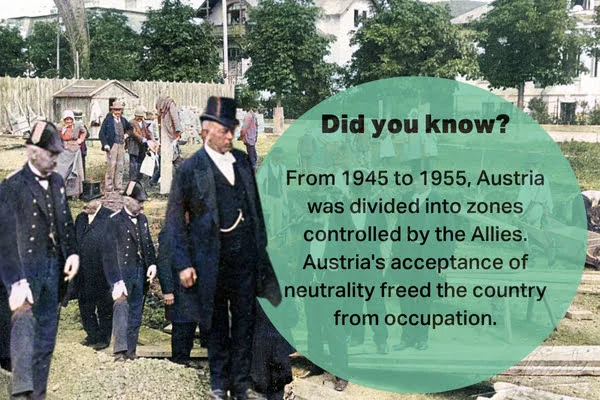
After the Second World War, renovations revitalized the building, and it reopened in 1957. Further renovations occurred between 1974 and 1991, and again in the mid-1990s. Consequently, the museum evolved into an important cultural center in Baden. Visitors can now explore a wide range of exhibitions and displays that cover the city’s history, prehistory, geology, and many other subjects. The continuous updates and expansions have ensured that the museum remains a vibrant and educational institution.

Photo by Karl Gruber – Own work, CC BY-SA 3.0
Rauhenstein Castle
Rauhenstein Castle, likely built in the 12th century, is strategically located on the road through Helenental, which is the only way through the Vienna Woods to the west. The first mention of the castle dates back to 1186, when Alber and Chonrat de Ruhinstein appeared in a book from Klosterneuburg. During the 12th and 13th centuries, the Tursen family owned the castle.
Additionally, the castle played a crucial role in the region’s defense and communication. Moreover, its strategic location made it an important stronghold for controlling the movement of people and goods through the Vienna Woods. The Tursen family’s tenure saw the castle thrive, contributing significantly to the local history and legends, such as the introduction of saffron cultivation in Baden.
In the 17th century, the castle changed hands several times. In the 18th century, the Quarient family rebuilt their estates, choosing Castle as their new home. Rauhenstein was rebuilt in the early 19th century by bookseller Johann Ferdinand Ritter von Schönfeld. Today, Rauhenstein is one of the largest castles in the Vienna area.
Legend
A Tursen family member brought saffron seeds from a crusade, starting the cultivation of this valuable plant in Baden. The region did cultivate saffron since the 19th century.

Photo by Uoaei1 – Own work, CC BY-SA 4.0
Scharfeneck Castle
Scharfeneck Castle in Baden, Lower Austria, has a long history. In 1923, Roman coins and ceramic fragments were found there, proving people have lived there for a long time. During the Middle Ages, Scharfeneck Castle, Rauheneck Castle and Rauhenstein Castle formed a triangle of castles to protect the road from Baden to Heiligenkreuz.
The first mention of Scharfeneck Castle dates back to 1405 when Friedrich von Scharffenekk owned it. Constructed probably at the end of the 12th or the beginning of the 13th century, the castle now lies in ruins, hidden in the forest at the foot of the Lindkogel. From the castle, visitors once had views of the neighboring castles Rauheneck and Rauhenstein, as well as Leesdorf and Tribuswinkel. The preserved wall surrounds the castle, and the ruins of a round keep still stand. Scharfeneck, Rauheneck, and Rauhenstein formed a strategic fortification triangle, which protected this important road.
Legend
Scharfeneck Castle is famous for a story about a knight who made a deal with the devil. The knight was tired and desperate. He had no home and cursed his fate. He wished for the devil’s help. The devil offered the knight the castle of Scharfeneck on the condition that he would never marry. The knight agreed, but after years of loneliness, he fell in love with the daughter of the ruler of Rauhenstein Castle.
The knight asked a hermit for advice. The hermit told the knight to ask the devil to show him the castle is actually already finished. The devil said he had built a castle with everything in it, but not a chapel. The knight got out of the devil’s control, married his love, and lived happily ever after. He was grateful to the hermit for helping him.
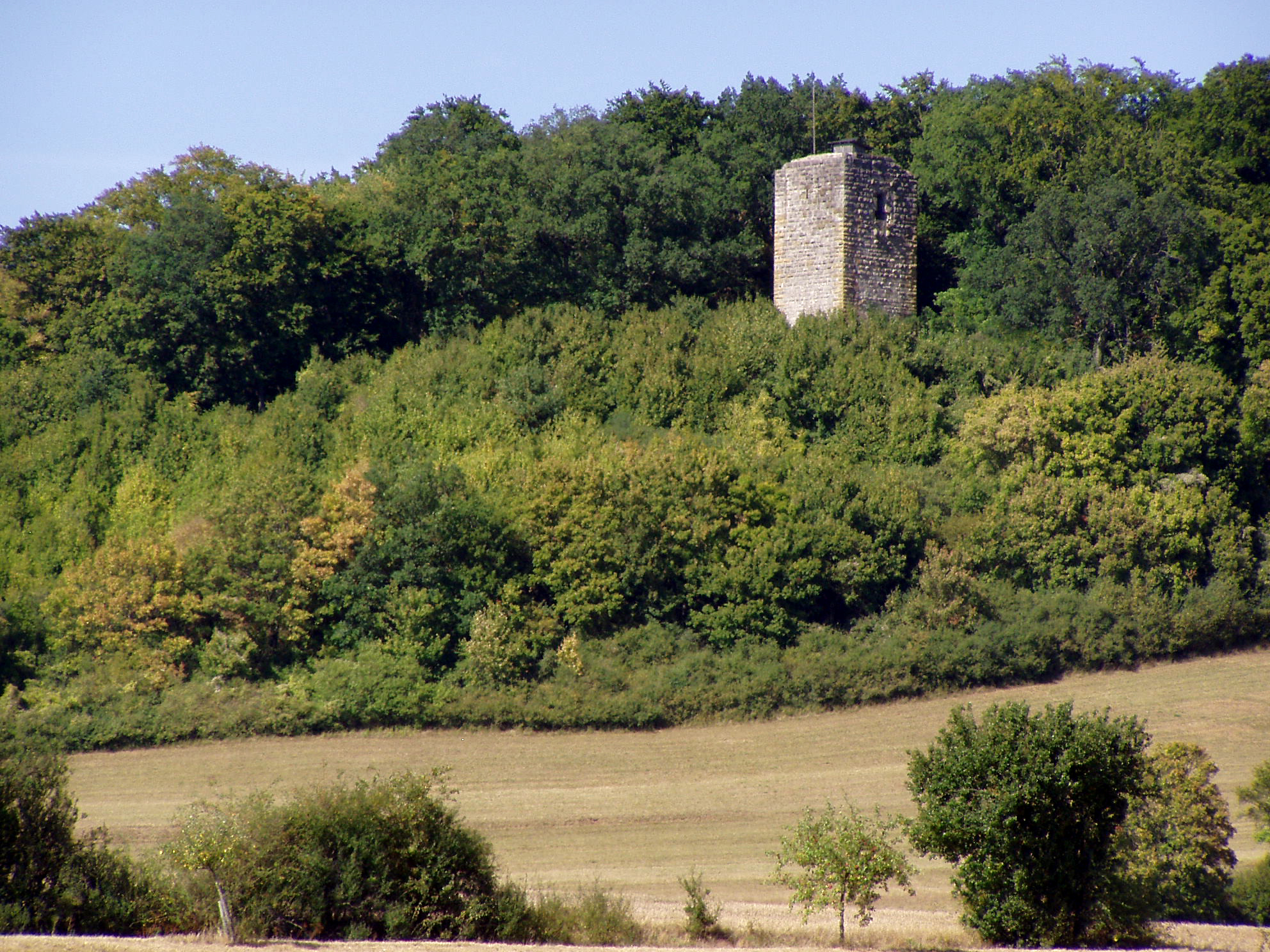
Photo by Settembrini – Own work, CC BY 3.0
Archduke Eugene’s Villa
Archduke Eugene’s Villa, also known as Villa Eugen, stands as an impressive residence on Weilburgstrasse in Baden. Built between 1883 and 1886 by architect Franz von Neumann for Archduke Wilhelm, the villa occupies the site of the former villa of Countess Hoyos. Designed in the historicizing style of the German Renaissance, it features bay windows, turrets, balconies, and arcades, giving it a castle-like appearance. After Wilhelm’s tragic death in 1894, his nephew Archduke Eugene inherited the villa. During World War II, the building served as a convalescent home and later as a Soviet Army occupation site, which led to its degradation.
In 1976, authorities listed the villa as a monument, prompting an exemplary renovation. Located at the western end of Weilburgstrasse, directly above Schwechat and below the ruins of Rauheneck, the villa now houses spacious apartments. Built with high-quality materials, such as carved stone and fireclay bricks, it consists of a basement, ground floor, first floor, and attic. An impressive wrought iron gate separates the property from the outside.
Did you know?
In 1894, Archduke Wilhelm died at Archduke Eugene’s Villa trying to tame a horse with an electric train.
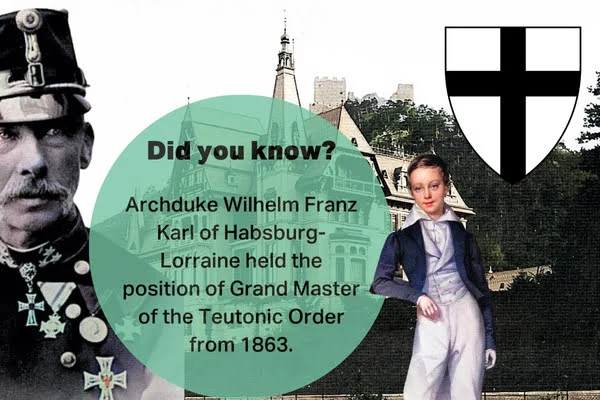
Emperor Franz Joseph Museum
The Emperor Franz Joseph Museum in Baden, on the edge of the Vienna Woods, houses a rich collection of folklore and arts and crafts from Lower Austria. The museum’s extensive collections include historic cutlery, folk art, weapons and uniforms. Local historians founded the museum in 1893, initially housing the archaeological and historical collections in the basement of the grammar school on Biondekgasse.
In 1905, a new museum building opened on Mitterberg, thanks to financial support from individuals like Zeno Gögel. To celebrate the 60th anniversary of Emperor Franz Joseph I’s reign, the museum opened the “Emperor’s Jubilee Hall” in 1908, and an additional exhibition hall followed in 1909.
During World War II, severe damage affected the museum, with many exhibits stolen or destroyed. In 1965, the museum reopened as the “Museum of Decorative and Applied Arts of Emperor Franz Joseph.” In 2005, marking its centenary, the museum adopted the name “Emperor Franz Joseph Museum,” and in 2008, a new “Imperial Hall” began welcoming visitors.

Photo by Henry Kellner – Own work, CC BY-SA 4.0
Theresienwarte
Theresienwarte, a popular lookout tower in Baden, stands on the site of the former gallows, which remained unused as real executions took place elsewhere in Baden until 1788. The Gamingerberg cruise area, part of Badenerberg, boasts a rich history linked to the Gaming Charterhouse, which disbanded in 1783. Since then, the area has gradually transformed into an attractive excursion spot, now connected to the upper spa park. Today, Gamingerberg offers walking paths, a fitness field, and great views of Baden. Theresienwarte, built on the Hühnerberg mountain, marks the second lookout tower at this site. The first tower, constructed in 1884 and financed by Theresia Göschl, was replaced by the current taller wooden structure in 2016, offering panoramic views of the surrounding area.
The Sauerhof in Baden
The Sauerhof in Baden was a large hotel until 2014. The building has been around since the 12th century. In 1583, Emperor Maximilian II bought the estate for his son, the future Emperor Rudolf II. In 1594, the estate was rebuilt and renamed Sauerhof.
The residence was destroyed in 1683 during the second siege of Vienna by the Turks. In 1713, Salomon Edler von Piazzoni bought the estate. After his death, Carl Hieronymus Holler Edler von Doblhoff inherited it. Joseph Kornhäusel converted the building into a hotel between 1820 and 1822. He added bathrooms, a restaurant, and a chapel, and surrounded it by an English garden.

The Sauerhof has hosted famous people like Ludwig van Beethoven, Carl Maria von Weber, and Antonio Salieri. In 1863, Archduke Albrecht bought the building and made it a military spa for Austrian officers. After the First World War, the building was used as a sanatorium and military hospital.
In 1960, the Austrian Social Insurance Institutions wanted to turn the Sauerhof into a rheumatology centre, but this didn’t happen. In 1972, the Schorn family bought the building and turned it into the Grand Hotel Sauerhof, which opened in 1980. By 1984, the hotel was owned by the Sultan of Oman and then various other people.
The hotel closed in 2014 because there were not enough guests.

Photo by Haeferl – Own work, CC BY-SA 3.0 at
Stadtpfarrfriedhof Baden
(Parish Cemetery)
The parish cemetery in Baden, known as Stadtpfarrfriedhof Baden, serves the parishes of St. Stephen and St. Joseph, as well as the Protestant community. Established in 1812, the cemetery has expanded several times and now covers an area of 62,300 m² with about 10,000 burial sites, hosting approximately 250 funerals each year. South of the parish cemetery lies a Jewish cemetery. Initially, the cemetery around the parish church proved insufficient, leading to its relocation to Halser Hütten in 1812. The cholera epidemic soon necessitated further expansion, with subsequent enlargements occurring in 1865, 1885, 1932, and 1939.
Did you know?
The parish cemetery in Baden is one of the largest in Lower Austria, covering an area of 62,300 m².
Photo by Karl Gruber – Own work, CC BY-SA 4.0, via Wikimedia Commons
Jewish Cemetery in Baden
The Jewish cemetery in Baden, located on Halsriegelstraße, lies south of the parish cemetery. Founded in 1873, it served Jewish residents of the surrounding towns, as well as patients staying in spas and hospitals. The cemetery has expanded multiple times and now covers an area of 12,500 m². Between 1904 and 1906, a ceremonial hall in the Art Nouveau style, designed by Wilhelm Stiassny, was built but later destroyed during the November pogroms in 1938.
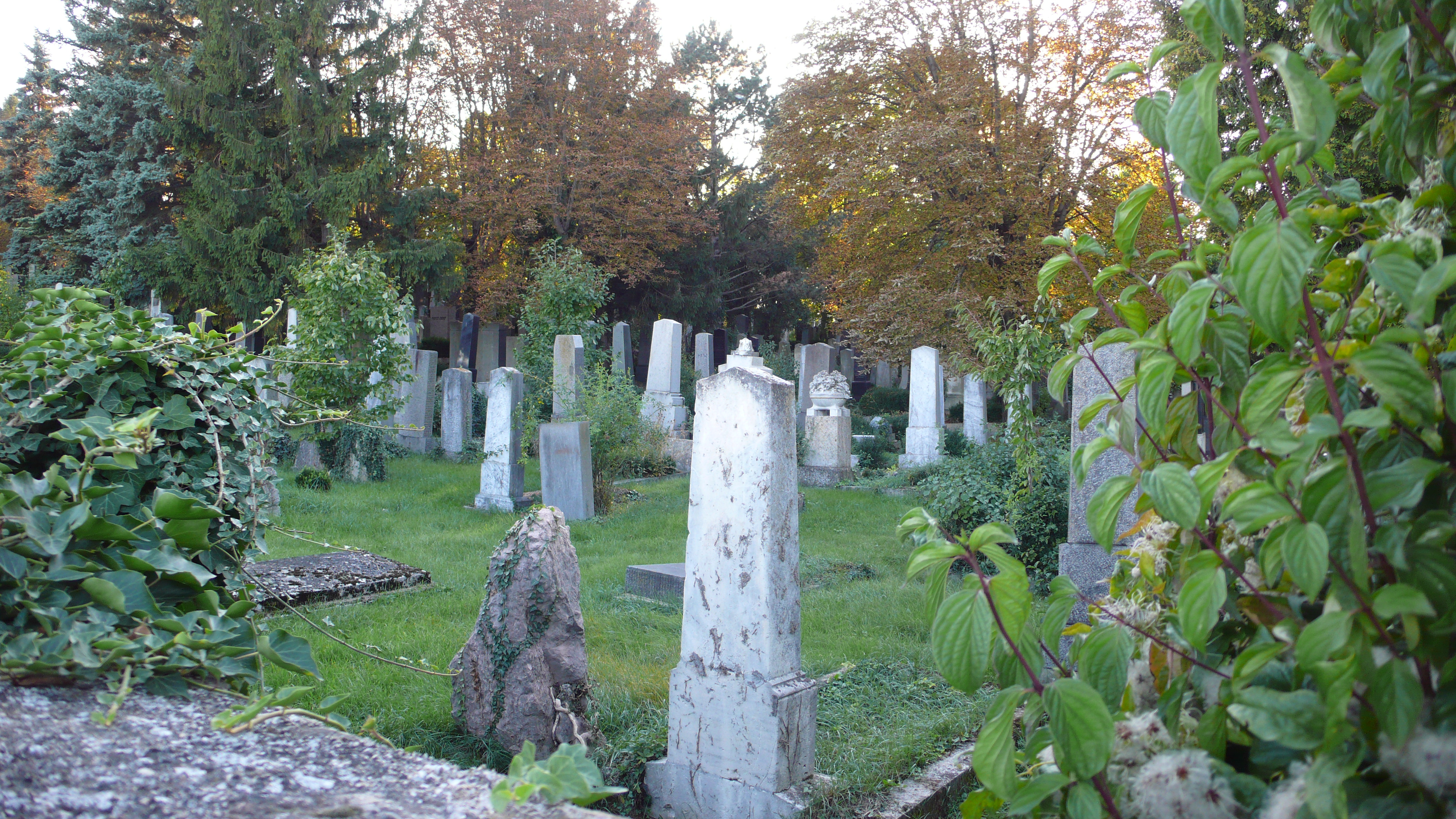
Photo by Andreas Stiasny – Own work, CC BY-SA 3.0 at, via Wikimedia Commons



